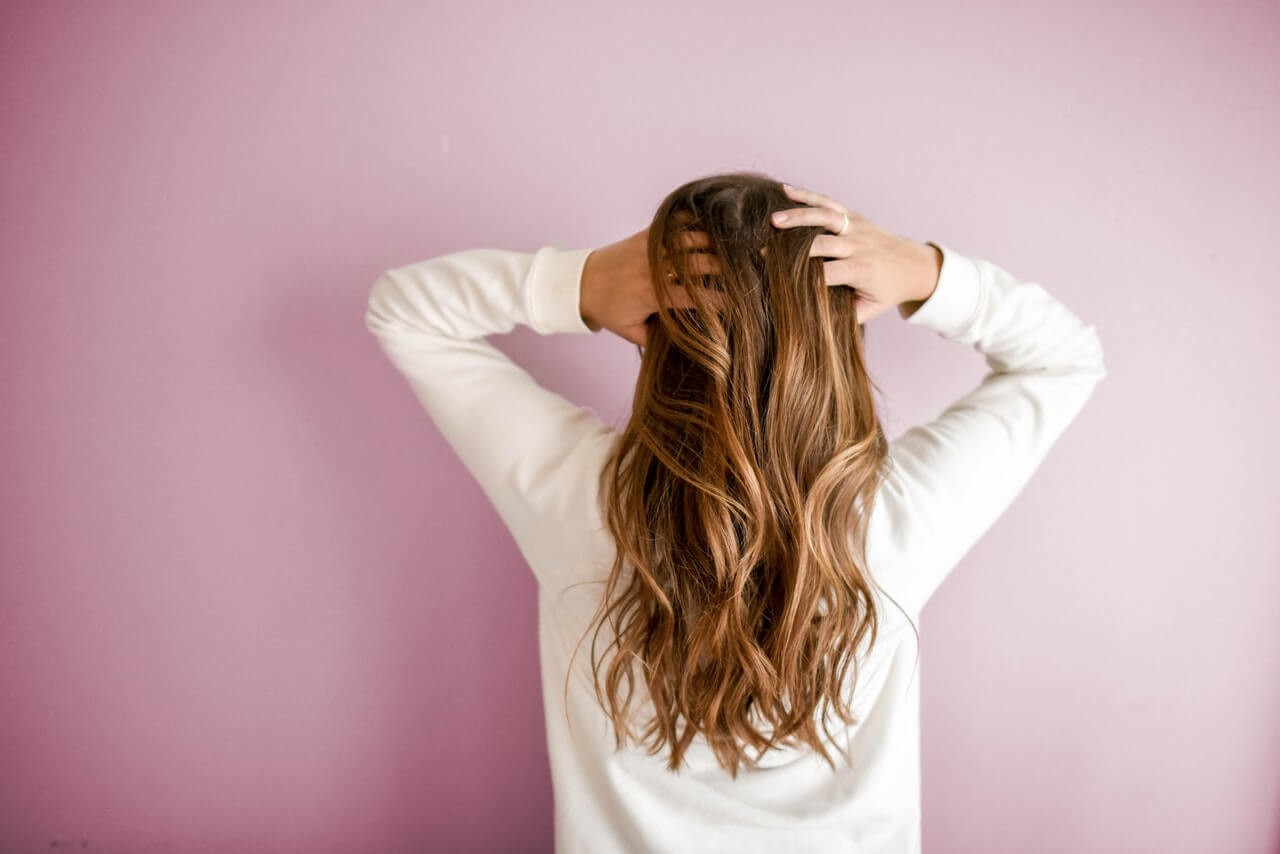
If your hair is damaged and you don't include protein in your hair care routine, you'll never be able to get your strands back in shape. Hair's main structural component is protein. As a result, once it becomes protein deficient, the only thing that can repair it is (damaged) protein. In the fight against split ends and breakage, a protein hair treatment, also known as a keratin treatment, is a game-changer. Protein makes your hair strands stronger and more lustrous. We're breaking down everything you need to know about keratin protein hair treatments if you've got damage or just want to strengthen your hair.
Understanding the hair's structure
To comprehend how protein treatments work, you must first grasp a basic understanding of your hair's structure. Keratin, which makes up 95 percent of hair, is a type of protein. Keratin is made up of an 18-amino-acid chain, which are the basic building blocks of protein. Keratin protein is responsible for keeping your hair strands structured and strong, as well as promoting hair growth and preserving its health and elasticity. However, harsh chemicals, hot tools, pollution, and even regular styling can weaken these keratin protein chains, resulting in damage such as dry hair, frizz, split ends, breakage, and even hair loss. Protein treatments can help with this.
What are the benefits of protein hair treatments?
Protein hair treatments work by reinforcing damaged strands with additional protein. Wheat proteins that have been hydrolyzed are used in this treatment. This means they've been broken down into low-molecular-weight particles small enough to pass through the cuticle and bind to hair keratin. It also fills in any protein gaps and forms a protective barrier around the hair shaft, shielding the hair cuticle from further damage.
Benefits of protein treatment for your hair
Besides repairing your severely damaged strands, a keratin protein treatment has several other benefits, no matter what your hair type. They include the following
It makes your hair smooth and shiny:
Keratin smooths the cells that form hair strands. This reduces frizz for shiny hair. Keratin also reduces the look of split ends by temporarily bonding the hair back together.
It makes your hair more manageable:
Because they smooth the cuticle, keratin treatments make hair more manageable, and easier to style. This is especially true if you have particularly frizzy or thick hair.
It encourages hair growth:
Protein is necessary for the growth of all cells, including hair cells. Plus, keratin strengthens and fortifies hair strands so that they don't split or snap as easily. This encourages hair growth and long locks as the ends aren’t constantly breaking off.
It helps restore your overall hair structure:
Protein hair treatments repair your hair strands by attaching hydrolyzed proteins to the hair cuticle and hardening it. This helps to restore your overall hair structure and prevents further damage, keeping the hair cuticle smooth.
How to tell if you need a protein treatment for your hair
Here are 5 signs that your hair is in desperate need of protein!
Your hair is color-treated:
Hair that’s been color-treated is highly porous and even more susceptible to damage than hair that hasn’t been treated. A protein treatment will help you maintain healthy hair.
Your hair has lost its elasticity:
If you take a strand of your hair, and gently stretch it, does it return to its natural state after being stretched? If not, you need a hair protein treatment.
You have breakage and shedding:
Losing up to 100 strands a day is completely normal. But excessive shedding is a sign that your hair is in need of protein. Especially if the hair that’s shedding isn’t from the root. This means that your hair is breaking.
Your hair is flatter and limper than usual:
If your hair feels flatter than usual, and looks limp and stringy, you likely need a protein boost. A protein treatment will help bring your strands back to life, adding texture and volume.
Your hair is porous:
Porous hair refers to your hair’s ability to absorb and retain moisture. Not sure if your hair is porous? Place a strand in a shallow bowl of water. If the hair sinks, it’s porous and could benefit from a protein hair treatment.
Types of Protein Treatments
These are the most common types of protein treatments for hair:
Professional keratin treatment
A professional keratin treatment, also known as a "Brazilian blowout" or a smoothing treatment, is an in-salon chemical process that reforms the keratin bond inside your hair fibre to keep it closed for a smooth texture. Heat straightening is used in professional keratin treatments to resurface the protein bonds in your hair and strengthen them from within. The end result is hair that is straighter, smoother, and easier to manage for about three months.
Protein hair mask
A protein hair mask can resemble a professional keratin treatment in terms of results. Hair masks, on the other hand, work in minutes, with less intense and shorter-lasting results than their salon counterparts. Once a week, as a step in between shampooing and conditioning, apply a protein hair mask. If your roots become oily, apply the mask from the mid shaft to the ends of your hair. Apply the mask to your roots as well if the hair closest to your scalp is dry, damaged, or has broken off. Make sure to follow the hair mask's instructions for leave-in time. If you leave protein in your hair for longer than recommended, you risk over-proteinizing it, which makes it more prone to breakage and, in the worst-case scenario, falling out. Rinse the protein hair mask out thoroughly with warm water, then seal in the moisture with a protein-free conditioner.
Amino acid leave-in treatment
Amino acids, the building blocks of protein, are infused into hair strands during this type of protein hair treatment. With each use, these work to strengthen the keratin bonds in the hair. Amino acids give hair body, softness, and shine, and they're great for protecting it from heat before using hot tools. Apply an amino acid hair treatment from the roots to the ends of damp hair, then comb it through. It should be applied after any scalp serums and before any other hair treatments or styling products.
DIY Protein Treatments
Protein-rich foods include eggs, yoghurt, mayonnaise, avocado, and coconut milk. Here's how to make your own protein hair masks with them. Weekly, rotate these deep conditioning treatments or pick a favourite!
Egg-yogurt mask:
Eggs are high in proteins and collagen, which makes your hair smooth and shiny. They also aid in the growth of hair. Yogurt is high in probiotics, which are beneficial to hair health.
- Beat an egg and 2 tablespoons of yogurt in a bowl until you get a smooth paste.
- Apply the mixture to your scalp and hair. Leave it for 30 minutes.
- Rinse out the hair pack with cool water.
- Shampoo and condition your hair.
Avocado-coconut milk hair mask:
Coconut milk is high in protein, and avocados are high in vitamins A, B, and E, which are all important for hair health. This mask also hydrates and stimulates collagen production, which aids in hair growth.
- Mash an avocado until there are no lumps.
- Add 2 tablespoons of coconut milk and 1 teaspoon of olive or coconut oil.
- Mix until you get a smooth consistency.
- Apply the mixture to your scalp and hair.
- Leave it for 30 minutes.
- Wash off with shampoo and condition.
Banana-avocado hair mask:
Bananas are high in potassium, natural oils, vitamins, and carbohydrates, all of which nourish, soften, and strengthen your hair. Avocados are high in essential amino acids and omega-3 fatty acids.
- Mash an avocado and a banana until there are no lumps.
- Add a teaspoon of oil to this mixture and mix well.
- Apply this mixture to your hair and leave it in for an hour.
- Rinse the mask out with cool water.
- Shampoo and condition.
Mayonnaise-egg hair mask:
Mayonnaise and egg both are rich in protein. This is the perfect DIY hair mask for taming frizz.
- Combine an egg and 2 tablespoons of mayonnaise until they form a smooth paste.
- Apply this mixture to your hair and leave it for 30-45 minutes.
- Wash off with shampoo and condition.
Yogurt-cream-egg hair mask:
Yogurt-based hair masks are excellent for cleaning your scalp and hair shafts. Yogurt cleans your strands while moisturising and nourishing them.
- Mix an egg, 1 tablespoon of cream and 2 tablespoons of yogurt until you get a smooth paste.
- Apply the mask to your scalp and hair.
- Leave it on for 45 minutes.
- Rinse the pack out with cool water.
- Shampoo and condition your hair.
Putting keratin protein hair treatments into perspective
If your hair care routine does not include protein treatments, especially for damaged hair, it's time to up your game. Hair is almost entirely made up of protein, and the only way to repair it is to add more protein to it. Including a protein hair treatment in your regular routine is critical for hair growth and is your best defence against split ends and breakage caused by everyday styling and wear-and-tear, especially if your hair has been chemically treated. If you're looking for a way to repair damaged hair, a protein treatment will strengthen your hair strands, resulting in healthy, shiny, and strong hair.



